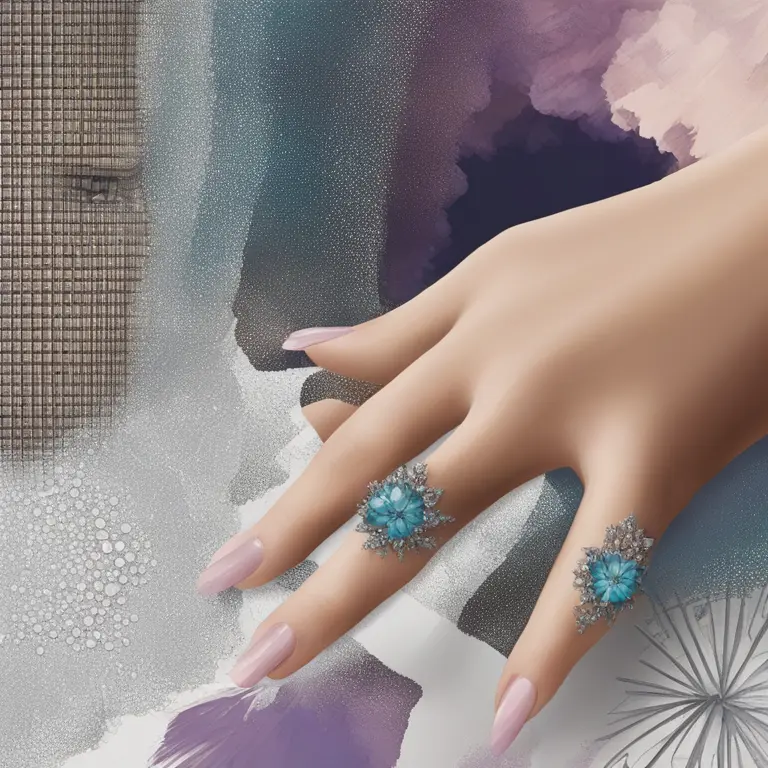
The Art of Palmistry: Interpreting Hand Lines
Delve into the ancient practice of palmistry to uncover what your hands may reveal about your personality, destiny, and more.
article by Nora Pennington
Palmistry's Mystical Origins
Palmistry, also known as chiromancy, traverses across various cultures and eras, embedding itself as an enigmatic art rooted in the desire to understand human nature. Thought to have originated in India, it was embraced by many ancient civilizations such as the Chinese, Egyptians, and Greeks. It posits that the palm is a unique reflection of an individual's personality, experiences, and potential paths in life. Today, it enjoys a resurgence in popularity as individuals seek personalized insights through the analysis of the palm's lines, mounts, and shapes.

Decoding the Major Lines
Central to palmistry are the major lines: the heart line, head line, and life line. Each carries a spectrum of meanings that palmists interpret. The heart line reflects emotional stability, relationships, and compassion. The head line offers insights into intellectual inclinations, communication style, and thirst for knowledge. The life line, often misunderstood, does not predict longevity but instead outlines vitality, vigor, and major life changes. Professional palm readers evaluate these lines not just in isolation but in correlation with each other to provide a holistic reading.

Unearthing Meanings from Minor Lines
In the shadows of the major lines lie the minor lines, which provide nuanced details about a person's life. Lines like the fate line hint at the influence of external factors on one's career and success trajectory, while the sun line correlates with fame and luck. Even less prominent lines, such as the Mercury line, can unveil health-related insights or communicative abilities. The careful study of these intricate lines can enhance the granularity of a palm reading, offering more layers of understanding.

The Role of Hand Type and Texture
Seasoned palmists don't rely solely on the lines of the hand. The shape of the hand itself—whether it's an earth, air, fire, or water hand—exerts powerful insight into one's elemental disposition and associated traits. Meanwhile, the texture of the skin can signal the level of sensitivity and responsiveness to external environments. When you consider the hand's topography, dexterity, and even the nail shape, a comprehensive character sketch begins to take form.

Mounts and Their Significance
What do the fleshy pads on your palms reveal? In palmistry, these mounts correspond to different planets, each holding the keys to certain attributes. The Mount of Venus, for instance, may indicate passion and desire, whereas the Mount of Jupiter showcases leadership and ambition. The analysis of these mounts, their prominence, and their interaction with the lines uncovers additional dimensions of a person's psyche and potential.
Modern Palmistry: A Blend of Tradition and Innovation
As palmistry progresses into 2024 and beyond, it retains its traditional roots while embracing modern perspectives. Contemporary practitioners are combining classic techniques with psychological insights, creating a more comprehensive form of personal analysis. Technology, too, plays a role, with apps and online platforms offering automated palm readings. Despite this innovation, the essence of palmistry remains—a tool to foster self-discovery and mindfulness in a constantly shifting world.
Published: 1/11/2024
Modified: 1/12/2024
More predictions
Come back here soon to learn more about yourself and your future


Can We Trust Palmistry?
Delving into the realm of palmistry, this article examines its credibility and place in contemporary spiritual practices.


The Efficacy of Palmistry: Real Insight or Fancy?
Delve into the validity of palmistry as a form of divination. Is there a truth behind the lines on our palms, or is it just a charming fancy?


The Ancient Art of Vedic Palmistry
Discover the ancient art of Vedic Palmistry and its practice in the modern era, revealing the secrets held within the lines of the hand.